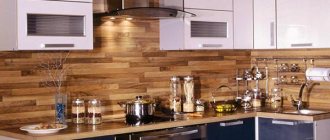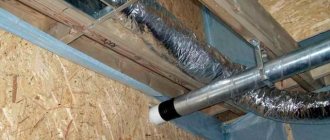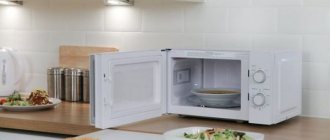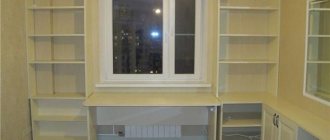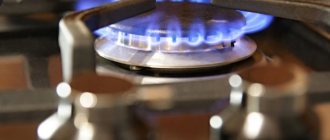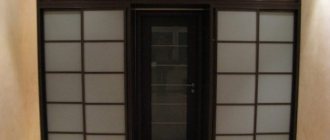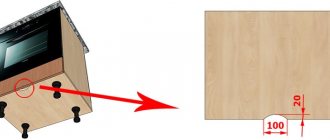Author: Bezrodu Beztribeni
08 October 2021 18:26
Tags: GOST hood gas stove prohibitions snip
40998
5
For many, the ban on kitchen hoods, which came into force in 2021, was a surprise. Amendments approved to the Fire Safety Rules prohibit their installation and use in houses where stoves are gas. A person who does not comply with legal norms is a criminal. What should they not become and what to do with the hood you have? You will find the answer to this question in my article.
0
See all photos in the gallery
Is it possible to place a cabinet above the stove?
If you contact your gas service and ask whether it is possible to hang a kitchen cabinet above a gas stove, the answer will be no. There are several reasons for this:
- Fire hazard. Kitchen furniture is made of wood, MDF, chipboard, etc., and these are all flammable materials. Under the influence of high temperatures, a piece of furniture can become hot and burst into flames, and if the flame is not extinguished in time, this can lead to a full-scale fire.
- Another, albeit more harmless reason, lies in the fact that the material of the cabinet, when heated and exposed to steam, can warp, gain moisture or dry out, as a result, the new furniture will only have to be thrown away.
- Even if the wall cabinet withstands thermal procedures without damage, no one can guarantee that when heated it will not begin to emit substances hazardous to health (some types of laminated chipboard emit formaldehyde and phenols). And even if the manufacturer claims that its furniture is 100% environmentally friendly, it is still better not to take risks and not expose the surfaces to constant exposure to high temperatures.
Other disadvantages include the fact that the cabinet will always suffer from soot and grease drops, which will spoil the whole look. You will have to constantly wash it with detergents, and this also negatively affects laminated and wooden surfaces.
Self-installation
A hood is not the most complicated device, so if you have a little experience and a set of necessary tools, it is quite possible to install it yourself. Self-installation is a great opportunity to save on the services of specialists.
Installation of a hood attached to the bottom of the cabinet
Hanging models are attached directly to the bottom shelf of the cabinet. Installation is simple, installation is carried out using self-tapping screws and a screwdriver. Since connecting the air duct to the recirculating device is not required, the installation ends by connecting it to the electrical network.
Installation of a hood in a wall cabinet
Installing a hood into a cabinet yourself requires certain carpentry skills. For a new set, the device is purchased at the furniture design stage. In order for it to fit into an already used hanging cabinet, it is necessary that the dimensions of the hood correspond to the internal dimensions of the case.
To work you will need:
- jigsaw, you can also use a manual one;
- hacksaw for wood;
- pencil;
- screwdriver (preferably a screwdriver);
- awl;
- construction angle, tape measure;
- clamps.
Installation steps:
- First of all, you need to free the cabinets from the facades, and not only the specific cabinet for the hood, but also the adjacent drawers. Next, remove the cabinet and fasten the adjacent cases together with clamps. Do not skip this point - the boxes may fall and be damaged.
- We unscrew the bottom shelf and apply it to the upper plane of the exhaust device. We outline the outline of the air duct and the holes for the outlet of the wire with a plug to connect the device to the network. Cut out the marked holes.
- We insert the hood into the housing and mark the upper boundaries of the device. We fasten the bottom shelf along the marked lines. We drill 4 holes in it.
You can ensure exact alignment of the fastening points with the holes using a stencil.
We fix the hood inside the cabinet and install the air duct. We use it to connect the ventilation hole and the system. We install shelves and fronts. It is worth checking the functionality of the equipment before installing the facades.
Installation of a hood with an air duct
The installation procedure for such a hood includes:
- fixing the hood;
- development of air duct and electrical wiring diagrams;
- box fitting;
- installation of the box using sealant.
The air duct is assembled from a plastic box or made of aluminum corrugation. The first option is stronger, more aesthetically pleasing and more reliable. Therefore, it is worth giving preference to it. Plastic is easy to saw and joined with special elements. Additional strength is added to the joints using sealant. Corrugation also has its advantages - its flexibility allows you to lay the air duct along a curved path.
Cabinet with built-in hood
A completely different matter is a cabinet above a gas stove, which has an electric hood built into it. The latter removes soot, grease and steam generated during cooking, so the cabinet lasts as long as the rest of the kitchen furniture. This system is a good option for organizing space in small kitchens. In this case, the cabinet performs two functions at once:
- allows you to store kitchen utensils inside;
- hides the working part of the hood from view, making the interior more attractive.
The cabinet hides the hood, forming a single line of kitchen facades.
Since most hoods have standard sizes, you can first order a module (cabinet), and then select built-in appliances for it. The advantage of this design is the large number of design options: the cabinet can be of various sizes, not only straight, but also angular. The corner variety allows you to rationally distribute space, using those areas of the kitchen that are usually not used.
Corner cabinet - a good solution for small kitchens
There are modules on sale in the following standard sizes:
- height - from 40 to 120 cm;
- width – 30–120 cm;
- depth – 30–80 cm.
The distance from the stove to the hood should be 75–85 cm (for an electric stove, these figures are 10 cm less).
The space inside the cabinet can be organized in different ways: depending on the design project, there may be not only shelves, but also metal containers, drawers, and organizers. The module can also be equipped with an open shelf (niche) for decorative small items: figurines, vases, etc.
A wardrobe with a niche is suitable for any interior style.
Extra space for storing useful items.
Retractable hood
Kitchen hood
A kitchen hood and ventilation are not the same thing, as many people think. The exhaust device is a housing, inside of which there is a filter, a fan and a motor that drives these elements. The fan creates air draft, and with the help of filters, particles of fat, soot, and foreign odors are captured. Thus, the kitchen is supplied with purified air, and grease and soot do not settle on furniture and appliances. The ventilation system is a design that creates optimal air exchange in the kitchen.
The placement of the hood should be planned during kitchen renovations and when choosing furniture. Many people prefer to abandon it because they believe that a kitchen without a hood looks more aesthetically pleasing, especially if the room is small.
Kinds
Exhaust devices in the kitchen can be arranged in two ways:
- with pipelines that exhaust air outside the building or into a ventilation shaft;
- without air ducts, with forced air supply inside the hood, its cleaning and return supply to the room.
In the first case, the operating principle of the hood is to supply fresh air from the outside, but in the second case this advantage is absent. The principle of how hoods work in the second type of kitchen is to circulate the same air throughout the room. However, exhaust devices with fresh air supply are sometimes difficult to install for a number of reasons:
- there is no possibility of installing air ducts, especially in a studio apartment;
- installation can ruin the designer interior;
- professional skills are required, because without experience it is difficult to carry out such work.
Compared to this type, circulation hoods for the kitchen are convenient due to their versatility of placement and the absence of the need for complex installation work.
Microwave oven over a gas stove: is it safe?
Installing a microwave oven over a gas stove is associated with the same problems listed in the first section. And if everything is more or less clear about deformation during heating, then many users may not believe that a microwave oven will catch fire, but in vain. If the device is overheated, it may begin to melt and then burn.
If you are still in doubt about whether it is possible to place a microwave above a stove, then it makes sense to read the instructions for the microwave. It will say that the stove should not be placed next to household appliances that produce a lot of heat, as this may interfere with the normal operation of the device. Thus, it is forbidden to place a microwave oven next to even a gas hob, not to mention hanging the microwave above the burners.
Criterias of choice
In order of importance, the criteria for choosing a kitchen hood for a gas stove can be ranked as follows:
- kind of work;
- dimensions and configuration;
- technical characteristics - power, control, additional functions.
We recommend that you read: Sewer ventilation
Kind of work
For a gas stove, a hood that removes gases from the room is preferable to a recirculation model.
Dimensions and configuration
These two parameters should be determined to the nearest centimeter. For a gas stove, a hinged hood is recommended, the area of which is slightly larger than the width of the stove. The minimum acceptable size is when the dimensions are the same.
We determine the configuration of the equipment according to the capabilities of the room and furniture. The dome model will require free space above the burners up to the ceiling. A built-in option or a pull-out model will fit well into wall cabinets.
Specifications
The operating power of a household hood is measured in watts and indicates the capabilities of the motor. When choosing, you should be interested not so much in the power itself, but in the productivity associated with it (measured in cubic meters per hour).
Power calculation
The performance required for your kitchen is calculated using the formula:
kitchen area (m²) × wall height (m) × 12 = minimum possible performance in air exhaust mode in cubic m/h
where 12 is the recommended number of complete air renewal cycles
The power of the selected kitchen hood for a gas stove must exceed the result obtained by 1.3.
Note! When operating in recirculation mode, power drops by at least 25%.
Controls and additional functions
Manufacturers offer several types of control for household hoods - touch, push-button, slider, remote, with the possibility of automatic modes. It is quite difficult to recommend one type of control or another. Here the choice depends on taste and preference.
Slider control (using a moving slider) is considered the most convenient for older people. Buttons are the most reliable option. Touch panel - for a stylish kitchen and a young housewife.
Additional functions include the type of backlight, filter contamination indicator, timer, response to human presence, the presence of a screen, and the ability to connect to a computer.
We recommend that you read: Bathroom hood
Why you shouldn't install a microwave above the stove
If a large amount of steam is regularly exposed to the microwave, after some time rusty spots will appear on the equipment, which will gradually increase in size.
By exposing microwaves to high humidity, you can get the following picture:
Plus, exposure to moisture negatively affects the internal mechanisms of the stove, which significantly reduces its service life. No one will repair a microwave under warranty that was installed without taking into account the instructions in the instructions.
Remember that if you hang a microwave above an electric or gas stove, there will be no room left to install a hood. And the absence of a hood will lead to constant high humidity in the kitchen, which will negatively affect furniture, household appliances and the finishing of the ceiling and walls.
Requirements for air ducts and electrical networks
Parameters such as air ducts and electrical networks directly affect the performance of exhaust devices. That is why it is necessary to take a responsible approach to the design of ventilation ducts and electrical networks.
It should be immediately noted that for recirculation type hoods there is no need to lay ventilation pipes. They absorb air and simply filter it, after which they return it back to the room. That is why this chapter will consider the flow-through type of exhaust equipment.
If you do not plan the air exhaust system correctly, a person may get a number of the following problems:
- Changes in pressure in the channels;
- Load on the hood motor;
- Poor air permeability;
- Large air flow from the street.
To avoid this, it is best to use the help of professionals who will install ventilation ducts according to GOST standards. Only in this case will the hood be able to reveal its full potential and not cause problems during long-term use.
Also, attention must be paid to electrical networks. The position of the socket must correspond to the length of the factory hood cable. Under no circumstances is it recommended to extend the equipment wire yourself; this can lead to cable oxidation and overloading the hood.
The socket is also installed in accordance with GOST standards. It is best to plan the wiring and power points in advance after the hood has already been purchased. Of course, you can always use an extension cord.
Where to put the socket
So, in order to correctly design and install ventilation ducts, it is necessary to adhere to the basic opinions of experts, which will help increase the performance of the hood and reduce the pressure on the device’s motor.
The first thing to avoid when laying communications is excessive bends. First of all, they force the exhaust air to create additional pressure in order to deliver the exhaust air outside the house. Hence the conclusion: the fewer knees, the less force the device will need to expend to perform its basic functions. Also, the pipes must be sealed. Under no circumstances should holes be allowed in them, which could lead to a loss of pressure and, accordingly, to overload of the hood motor.
It is important to make the distance from the hood to the street as short as possible so that the exhaust device spends less energy working with a large volume of air. Also, narrowing and expansion should be avoided - the pipe must be of the same cross-section throughout its entire length, which will allow maintaining constant pressure for normal operation of the fans.
It is also recommended to install ventilation communications strictly at level. There is no need to make the air rise at an angle through the pipe; it is better to maintain a strict horizontal line and use a 90-degree elbow to move to the vertical level.
The diameter of the ventilation pipes must match the hood connector. It is best to use pipes made of environmentally friendly plastic or galvanized, they will last longer, and the cost will not hit the budget too much.
It is important to note that the installation of ventilation ducts should be carried out by a specialist who has extensive experience working with hoods and knows the basic subtleties that can improve or, conversely, worsen the performance of the exhaust device.
Distance for ventilation ducts
According to GOST standards, the outlet for the exhaust device is installed at a height of 2.5 meters from the floor level. This is the optimal indicator that specialists will use during the installation of electrical communications.
Also, it is necessary to step back 15-20 centimeters to the left or right from the hood so that the equipment body does not block the access point to the electrical network. Some hoods are connected directly to the network using terminal blocks or plugs, so installing an outlet is not always necessary.
It is very important to provide grounding for the outlet. Grounding prevents the device from burning out due to voltage surges or other unpleasant situations. Considering that some hoods cost a lot of money, it is best to take every precaution and know that the equipment will not be damaged.
If the wiring and sockets are old and the hood is already installed, you can use an extension cord. However, it is recommended to purchase an extension cord with a fuse (a device that will disconnect the carrier from the mains in the event of power surges or other situations).
Difference in purpose
At first glance, in both cases we are talking about air purification. However, the nature of its contamination may be different. It’s one thing to have ordinary, heterogeneous dust; another thing is to have an atmosphere saturated with tiny fat droplets, fumes, and burning products, heated to high temperatures. In the first case, an air purifier, which can be equipped with humidification and ionization functions, copes with contaminants. In the second, the problem is solved by a household hood used in the kitchen. Hence the difference in the definition of these devices:
- An air purifier is usually defined as a device for cleaning dusty air in a room;
- A household hood is a device for eliminating smoke, fumes, burning, and other odors accumulated in the kitchen area that arise during the heat treatment of products.
Privileges
Our state supports and helps socially vulnerable citizens and those who deserve it.
Assistance in paying for housing and communal services, one of the main benefits provided by the government.
The second type of similar assistance is subsidies.
A list of citizens to whom the federal and local budget provides benefits for paying for housing and communal services has been established:
- Heroes of the Soviet Union and Russia
- Disabled people, WWII veterans and their close relatives
- Disabled people of all groups
- Disabled children
- Radiation victims at nuclear power plants
- Large and low-income families
Discounts are provided for sewerage, electricity, heating and gas.
Benefits apply to all family members living with the beneficiary in one residential space and amount to 50%. The remaining half is paid by the budget.
Changes in the cost of housing services in Moscow and the region 2021
The main document establishing tariffs in Moscow for housing and communal services is Government Decree No. 848 - PP dated December 13, 2016. (as amended on 04/08/2019).
According to calculations, in Moscow, the growth of payments for utility services will increase, on average, by 53 rubles per person. This includes gas, electricity, water supply. Tariffs for housing and communal services in the capital of Russia are much lower than other large metropolises in the world. But much higher than regional prices.
In the Moscow region, tariff indexation will increase by approximately 3%.
Tariff "Mosenergosbyt"
The increase in the cost of electricity services in Moscow will occur no earlier than July 1, 2021. According to analysts, the increase is expected from 3 to 3.3%.
With a single tariff, charges will be made at the rate of 3.89 rubles. per kW/h.
The two-tariff size is:
- Daytime – 4.47 rubles. kW/h
- Night time – 1.68 rub. kW/h
Different tariffs are provided for different categories of residents of the capital. Also, when calculating payment, the type of stoves installed in the house (gas or electric equipment) and residence in an urban or rural area are taken into account.
This is important to know: Consolidation of personal accounts in an apartment according to the Housing Code of the Russian Federation
Price per 1 cubic meter gas for the population
Gas price indexation in 2021 for all categories of consumers, including the country’s population, will be 3% annually from 2021 to 2024.
Tariffs for gas supply services until June 30, 2021 are as follows:
If there is no counter:
- If you have a gas stove and central heating – 8.30 rubles. cubic meters
- With a gas stove and gas water heater (no central heating or hot water supply) – 8.30 rubles. cubic meters
Houses with heating from gas heaters - 7.60 rubles. cube m.
Cost of water
Tariffs for drinking water (water supply), sanitation for the population are as follows:
From 01/01/2020 to 06/30/2020:
- Drinking water – 32.22 rub. cubic meters
- Household drainage – 45.53 rubles. cubic meters
- Disposal of surface wastewater – 35.42 rubles. cubic meters
- From 07/01/2020 to 12/31/2020
- Drinking water – 31.55 rubles. cubic meters
- Sewerage – 47.36 rubles. cube m.
- Wastewater – 35.42 rubles. cubic meters
Value added tax is not included in the tariff.
Garbage removal tariffs
As of January 2021, waste collection is considered a public service. And all the benefits apply to her, like everyone else. Garbage fees are now calculated based on the number of residents.
Decisions on tariffs are made by local regional authorities. On average, payments in Russia will increase by 12%. Payments will increase by 30 rubles per person.
Tips for use
- Keep the device clean and wipe it free of dust and grease after each use.
- Do not turn off the device immediately after cooking, as steam particles can spread throughout the kitchen faster than the device can absorb them. Therefore, you need to leave the hood running for a few more minutes so that it draws in all the fumes.
- Replace carbon filters regularly - at least 2 times a year.
Technical specifications
Each air purifier for the kitchen has its own technical parameters. To determine whether a device is suitable for a particular room, you need to find out:
The flow-through appliance throws kitchen fumes and soot out
- Working blade size;
- Performance;
- The height of the noise.
Working blade size
The size of the working surface of a stationary air purifier must be greater than or equal to the size of the plate. There are three standards for hoods: 60, 90 and 120 cm. Some owners install cooking appliances in the center of the kitchen or form an island from several surfaces. In any option, it is necessary that the air purifier controls the entire slab surface.
Performance
Productivity is the amount of air mass that the device passes through in one hour.
The calculated productivity of the air purifier must be higher than that specified in the technical data sheet.
To determine the calculated indicators, the volume of the room is multiplied by 12 (the air exchange rate for the kitchen) and by 1.3 (the level of air pumping through ventilation in a multi-story building). In one-story houses, the last indicator can be neglected.
Noise
Air purifiers for the kitchen cannot be called low-noise devices. The maximum noise level is 65 dB, but in general, kitchen air purifiers are noisy at 55 dB. For comparison, the same indicator for a refrigerator is 45 dB, and the centrifuge for a washing machine produces 68 dB.
Type of hood in the kitchen interior
In order to select an air purifier, it is necessary to determine the intensity of pollution and the required functionality. The main requirement for the device is to clean the air and remove harmful substances from it. The device does not require the installation of ionizers or oxygen enrichers, which will only complicate its maintenance.
New housing and communal services tariffs from 2021: increases and changes
Every resident of our country is concerned about the issue of increasing housing and communal services tariffs in 2021. The government has developed a plan for the development of housing and communal services, the main goal of which is to improve the quality of public services to the population.
Will this affect you and me? What surprises are expected from housing and communal services in 2021? Let's figure it out.
Differences in cleaning methods
Both types of cleaning technology can operate in a recirculation version. In this case, the air taken from the room passes through the filters and returns in a renewed state, ready for reuse. With this cleaning scheme in the kitchen hood, odors and fumes are retained by carbon filters, while oily vapors are collected by a grease filter. In an air purifier, the circulating filtration system is more diverse. It can be:
- the same carbon filters,
- photocatalytic cleaning,
- thin HEPA filter,
- electrofiltration,
- water wash.

